By the very nature of the job Emergency Medical Services (EMS) personnel are exposed to dangerous situations. Emergencies are fluid, fast-moving affairs and they often happen in sketchy places. Patients are sometimes combative due to the call itself (assaults, domestic violence), or being drunk or high. EMS crews are asked to go into “bad” neighborhoods, walk into strange houses, and be left alone with a person they just met. There’s a lot that can go wrong. Today I’m going to explore some options for self-defense for EMS professionals.
This article contains affiliate links.
Though this article is geared toward EMS professionals much of this information likely applies to a much broader category of people. Aside from certain specific tools, like the radio, much of what I’m going to say here applies to anyone who can’t carry a firearm. You may not be able to carry for ongoing reasons like your job, or for shorter-duration events like attending a concert with tight security or going to a bar, or visiting someone in the hospital.
Don’t Skip The Disclaimer!
I’m going to issue a very heavy disclaimer on this one. A huge number of variables go into self-defense tools that are available to you including (but not limited to) your agency’s standard operating guidelines (SOGs), your company’s employment agreement, and your state and local laws. I am not recommending or encouraging you to break any of these laws, rules, regulations, guidelines, etc. Doing so could cost you your job, your financial independence, or your freedom. Proceed with an abundance of caution because it is you who will accept responsibility for your own actions.
Using deadly force is always a potentially fraught proposition. Law enforcement officers that are charged with the use of deadly force often have their actions thoroughly scrutinized. An EMT or paramedic using deadly force will almost certain be publicly scrutinized, as well. This doesn’t mean that you shouldn’t use deadly force; it only means that you should do so when you are at serious risk of being gravely injured or killed and there is no other alternative. You should only use deadly force when no other reasonable alternative exists.
I don’t mean to foster a mindset of an adversarial relationship with your patients. In almost all situations your patients are glad to see you, and they need your help. I generally don’t walk into a house with a “us vs. them” mentality; I generally approach my patients very humbly, realizing that they are having a very bad day. I would encourage you to keep that in mind, while simultaneously maintaining situational awareness and being willing to act when something doesn’t feel right. Is it a duality with a lot of grey area and precious few black-and-white, hard answers? You bet it is.
It’s important to understand the place that this is written from. I live in a rural area. My EMS agency covers a massive geographical area. Under ideal circumstances it sometimes takes us 30 minutes to get to a call. This means that if we require law enforcement assistance it would take them a similar response time to get on-scene. Your agency may be even more remote than mine. Your agency may be in a big city with LEOs on-scene at every call. You should probably factor your “operational environment” into your decisions about self-defense tools.
Finally, don’t take what I’m saying as “handed down from on high,” or that I’m purporting to be the voice of experience. I have barely enough experience in EMS to begin understanding what the job is actually about. On the other hand I have a large body of self-defense training, and a very large body of experience operating in dangerous places. This article is my attempt at blending the two with what little I know about EMS. Don’t take this article as advice, just as the observations of someone trying to formulate his own self-defense plan, and maybe get you thinking – fair enough?
Danger Areas in EMS
As previously mentioned, EMS is a dangerous job. There are a lot of dangerous aspects of the job, and this article will focus on the danger presented by human attackers. To keep things in perspective though, EMTs and paramedics are massively more likely to be killed by suicide†, in auto collisions, or be hit by cars while working traffic accidents than by intentional acts of violence. This makes seeking mental healthcare, additional driver training, and wearing visibility devices all much a much higher priority than self-defense tools.
That’s not to say that patients and bystanders don’t present some level of danger, though. Sometimes they do, and sometimes there is the need for some self-defense for EMS professionals. To better understand this potential need I think it’s important to understand the “zones” in which violence is likely to occur.
On-Scene: This is a very important “zone” in which to recognize potential danger. On-scene is your first interaction with a patient. Scenes are also potentially rich with bystanders, family, friends, and neighbors. If the call you’re responding to is the result of some sort of violence it’s not unusual for both parties – perpetrator and victim – to still be on scene. While we’d like to think we’ll always have law enforcement with us on scenes like this there are times when we won’t. The fact is we very rarely know what we’re getting into. That “emergency breathing problems” call could very well turn out to be an incidence of domestic violence, or that “routine fall” could be the result of a dog bite. You just don’t know until you know.
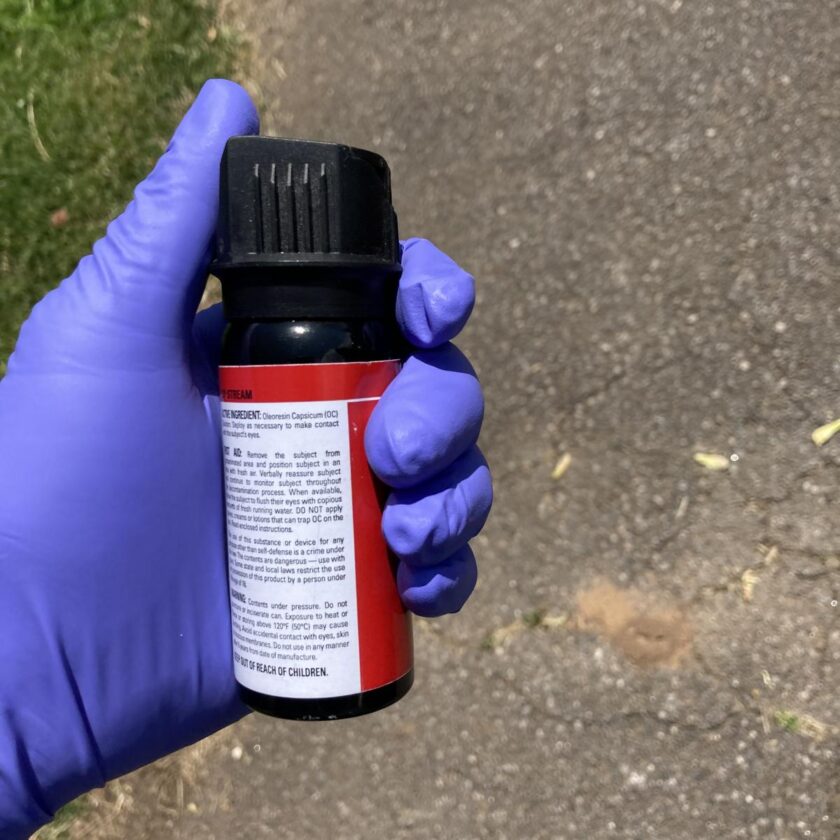
Again, I don’t want to overplay the danger presented by patients and their family members. In my (admittedly tiny amount of) experience, most people are really happy to see EMS pull up. However, on-scene is where a lot of decisions should be being made. What drugs (including ETOH) and how much does the patient have on board? Is the patient already being somewhat belligerent? Are friends or family members agitated? Are you noticing indications of abuse to a child or spouse that someone might notice you noticing?
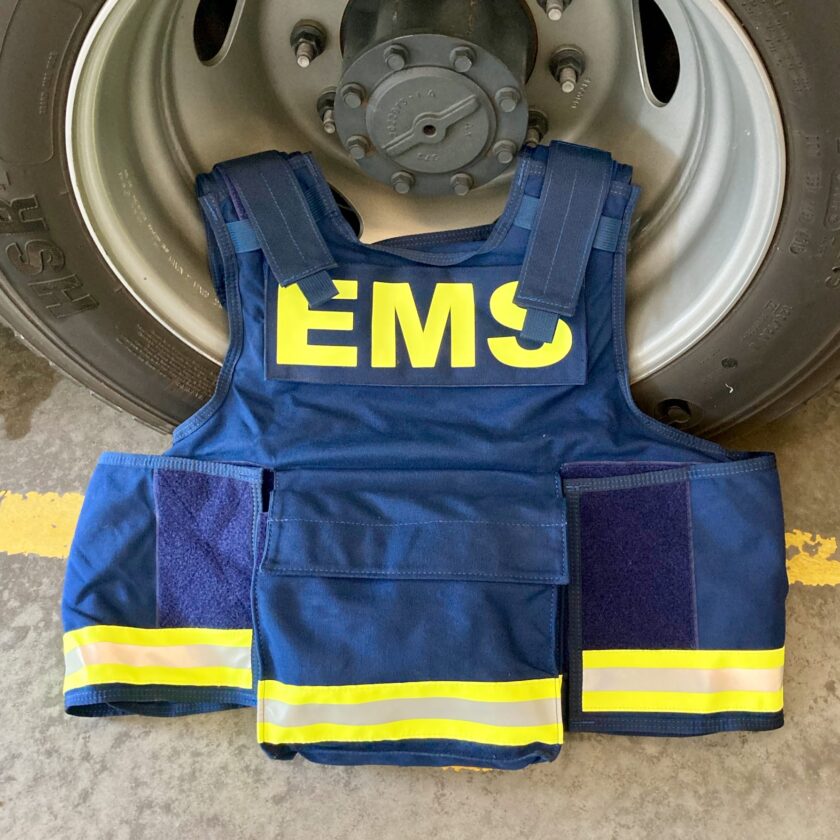
At the scene is when you have the most flexibility. You have a decent combination of information about the scene, situation, and individuals involved, as well as some degree of flexibility in your response. Once you’re committed and have made patient contact it can be more difficult to extricate yourself, in a couple of senses. First, there are abandonment issues to worry about, making simply removing yourself legally more difficult. Secondly, once your deep in a house it’s easy for other parties to come in and block you in, even if inadvertently. Again, that silly “scene size up” bullet you’re supposed to verbalize in every scenario…is actually pretty important.
In the Ambulance: Despite the best judgement in the world you can still get a patient in your ambulance who might become violent. I look at the on-scene time as a chance to identify potentially violent patients and get LE assistance, but that’s not foolproof. Any number of things can cause a patient’s attitude to shift. Though I think I’m a pretty personable, likeable guy, I’ve ridden a couple of patients that just didn’t seem to like me. Some patients may swing through a number of emotions as they deal with what happened to them. Some may take a turn as drugs begin to kick in or – just as often – wear off.
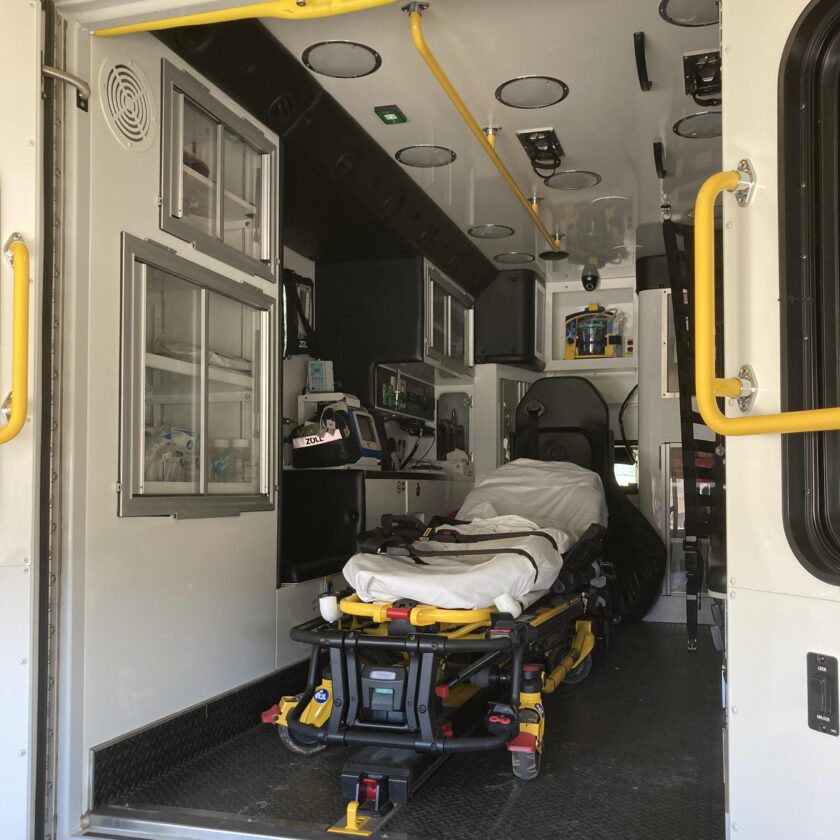
Once you’re in the ambulance there are probably a couple things working for you…and a couple things working against you. In your favor the patient is probably strapped down to the stretcher. Though not techincally “restrained” (EMS doesn’t utilize physical restraints where I work) he or she is likely buckled in, allowing you to get behind the head of the stretcher, and/or giving your partner a few seconds to pull over and come to your aid. However, once in the box the patient is definitively in your care and it is, quite literally, your job to care for his or her well-being. Here prudence, judgement, and both the nerve and the physical strength to be able to distinguish a credible, immediate threat is absolutely paramount.
Other locations: There are other locations where threats may occur including at the hospital, while getting fuel, eating, or staging. The bulk of this article to this point has assumed it is a patient or family member who will become violent, but in these scenarios it will more likely be some random human. I can’t begin to cover all of these possible scenarios, so I’ll stick with the two that are somewhat EMS-specific.
With that stuff out of of the way, let’s get into the tools of self-defense for EMS professionals.
Body and Mind > Tools
Oh, wait – one more thing before we get into that stuff. As my friend Rich Brown likes to say, “I am the weapon; guns and knives are just adjuncts.” Your mind and body are the two most important tools you possess. This is very commonly overlooked in the self-defense space where stuff you can buy trumps stuff you can do a million-to-one. Overlook them at your own folly, though.
Your mind can keep you out of a lot of situations before you ever get into them. That whole NREMT checklist “scene size-up” thing is actually pretty important; can tell a lot from a windshield survey before we ever even open door to get out. Are there dogs running around? Is there a crowd of drunk people hanging around in front of the house you’re going to? Is this a house we’ve been to before that has been problematic? Who is that dude lurking around over there? Sometimes there might not even be a specific indicator of a problem – just a gut feeling that something isn’t right.
You also need to develop a keen sense of judgement and be prepared and willing to use restraint much more readily than force. Using any sort of physical force in EMS is a fraught proposition. We are expected to take some abuse from patients who are altered due to hypoglycemia, dementia, hypoxia, or any number of other medical conditions. That’s just a fact of life – you can’t beat up every grandma who is a little combative due to low blood sugar. When does force rise to the level that your use of force in return is justified? I can’t definitely answer that; it will be situationally dependent. But for an EMS professional I’d wager that bar is going to be set a little higher than for the average civilian.
Your physicality can also be a huge asset. First, just looking like you have some upper body strength can sometimes deter a fight. Being physically fit also brings confidence; if you’re presenting yourself as both confident and fit you are probably presenting a more intimidating target. But we can’t count on that, so that physical strength and stamina will help you should you find yourself grappling with someone in the back of the truck.
Some skill in some fighting art wouldn’t be a bad thing, either. Personal skills and ability enjoy some massive advantages over tools. First, they can never be “prohibited away” from you. All the prohibitions in the world can’t take your skill from you, and can’t make you leave it in your car when you get to work. Secondly, personal fighting skill is very likely to help you head off a situation before the need to introduce a weapon arises. This is much more legally (and probably administratively in the context of keeping your job) defensible than pulling a knife or bashing heads with a portable suction unit.
Ultimately you are the weapon. Everything else is merely an adjunct. Of course, should the fight come to me I want some adjuncts to make it as unfair (in my favor) as possible. Let’s look at some of the tools that may (or may not) be at your disposal.
The Radio
More EMS personnel should probably start thinking about the radio like cops do: as your lifeline. The radio is the most powerful tool in your arsenal – it can bring way more power to bear on the situation than any tool you could possibly carry on your person.
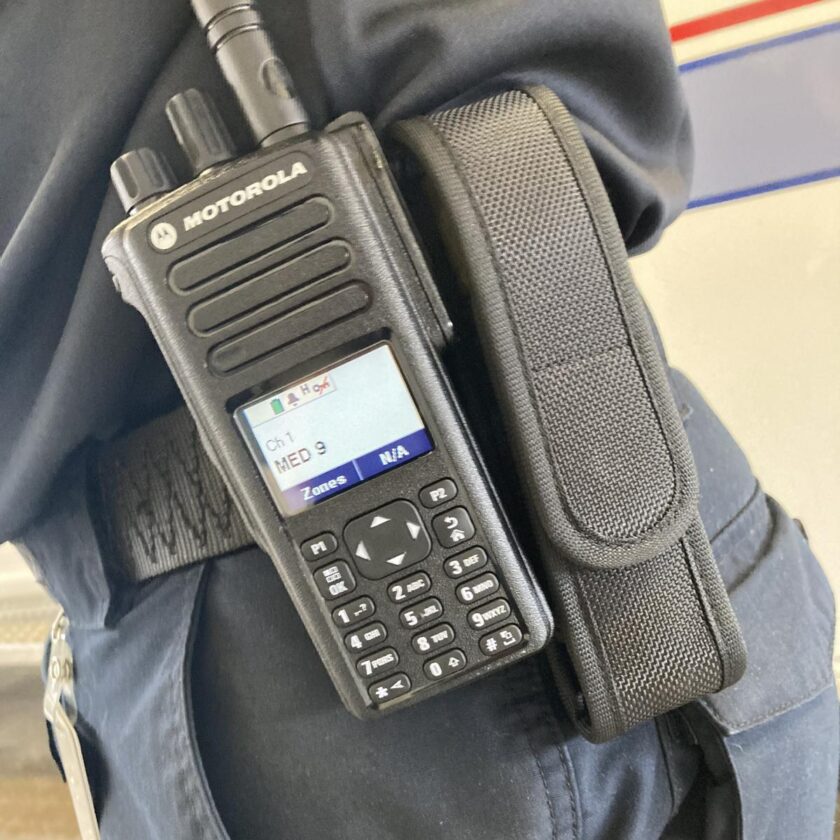
The radio only works if you can use it, and only then if you can hold out until help can get there. It is made massively more effective if used early rather than late. If you feel like your need some LE assistance, don’t hesitate to ask for it. Obviously this comes with balancing the necessity of getting to the patient in a timely manner and not tying up LE resources unduly. Use your judgement but if something feels wrong don’t hesitate to jump on the radio and ask for some help.
Sometimes you may not want to pick up the radio and verbally ask for police. This may further upset already-agitated individuals on the scene. There are some other tools and best practices for utilizing your radio in a sticky situation.
First, if your radio has an distress button learn where it is and how to use it. Often this is a small, somewhat protected button on the top of the radio that alerts dispatch that you are in trouble. Once activated (usually by pressing and holding for several seconds) a distress signal is issued, along with your unit number/location, and occasionally several seconds of open mic. These are outstanding tools, but you have to know they are there. I mention that because no one told me this was a feature of our radios until had been on the job for six months.
As with any emergency signal, there are false alarms. Generally in my community the police respond to each and every one of these activations as if it were the real deal. If you want to make doubly sure your distress signal is treated with the urgency it needs, make sure both your and your partner are sending the signal. While one emergency signal will sometimes be activated, it’s really, really rare for both handhelds’ emergency buttons to be activated at the exact same time. Additionally, some agencies have “duress code” responses; that is, a verbal response back to dispatch that sounds innocuous to bystanders, but indicates that you are truly in trouble.
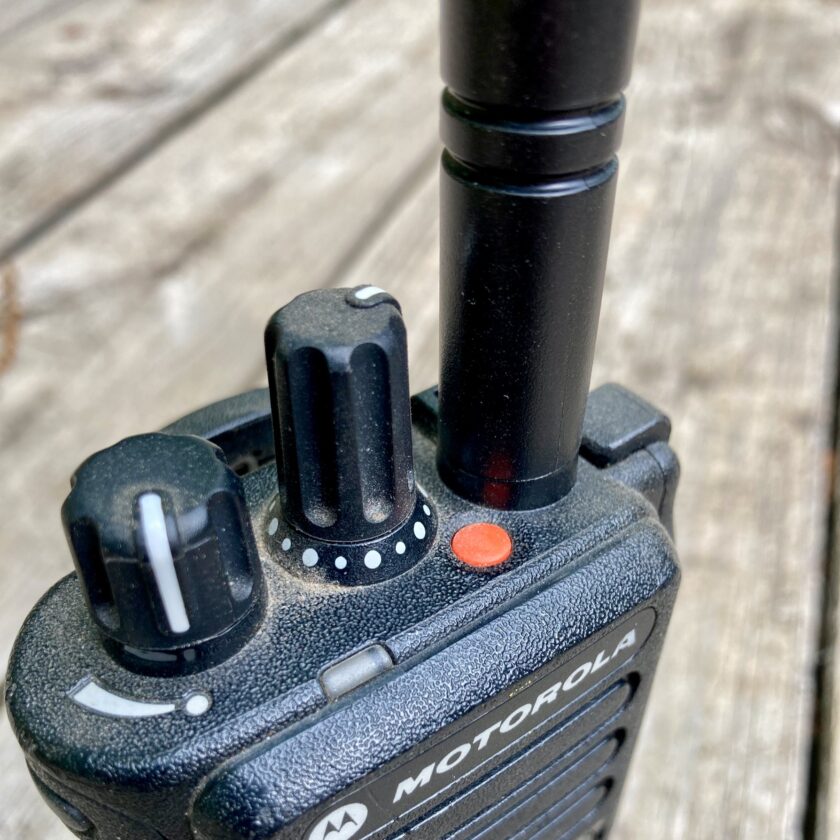
Even if your radio does not have a distress signal, you also might consider keying the mic and letting a portion of an altercation be transmitted over the radio. If you choose to do that rather than to simply broadcast a request for help there is probably a reason. Your call would likely further agitate people on scene. If you choose this technique you may want to first turn your volume completely down (as well as that of your partner’s radio).
I’m sure there are probably a few things I’m missing here. The big, big takeaway is that your radio is probably your biggest asset when you are in danger. Use it first, use it early, and really think about how you’re going to use it before your find yourself needing it. If you are an FTO, preceptor, or other leadership role, make sure your people know about this tool and when (and how) to use it. If you’re a working medic or EMT, make sure you know exactly how to use it.
Flashlight
If you work in EMS you should probably have a flashlight on you. I use my flashlight on pretty much every single shift. I use it to check out nooks and crannies on the walk up to a scene, to illuminate rooms as I’m walking through a house, to make myself visible on vehicle accident scenes, and for patient care things like assessing for bruises/bleeding/etc. If you’re not carrying a halfway decent flashlight you probably should be. I have plenty of reviews of good flashlights on this blog.
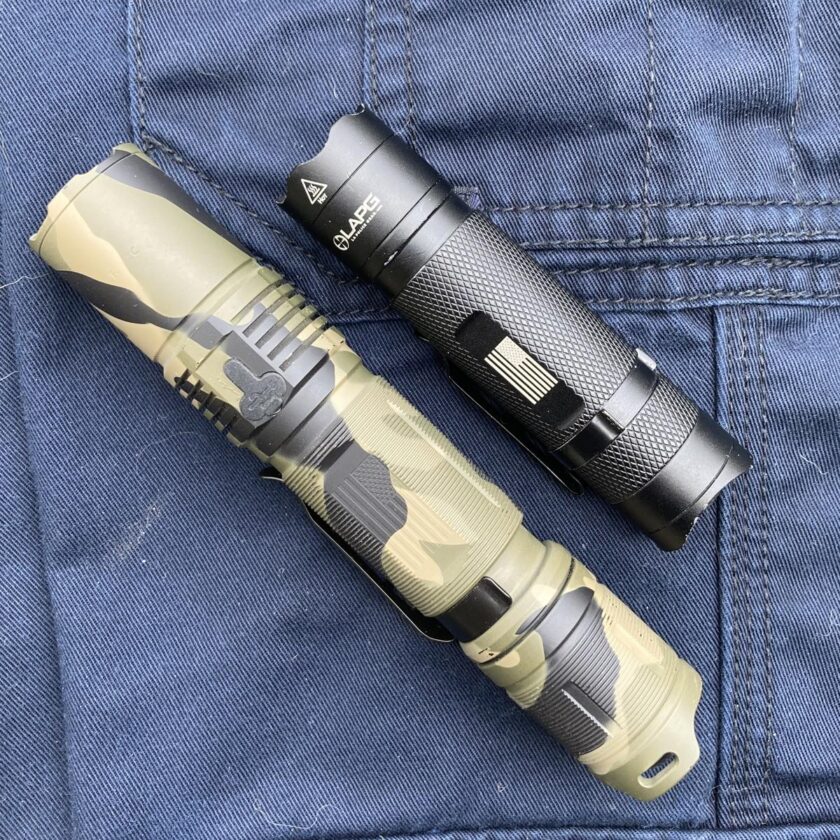
A flashlight is an extremely important defensive tool, and one for which there are almost zero legal ramifications for using. First and foremost, a flashlight lets you visualize dark rooms as you walk through a house. Being in EMS means you go into a lot of homes. In less than a year of working EMS I’ve been in homes that lack electricity, have holes in the floor, have dog shit all over the house, etc. Trust me – you want to be able to illuminate your path as you walk through a house.
You also want to be able to see what is in the rooms you are passing as you’re walking through the house to locate your patient. There are often other people in the home other than your patient; I don’t like giong deep into a house and letting them get behind me, especially if I don’t even know they’re there. At a minimum I want to know about their presence. A flashlight is also really helpful for noting people on outdoor scenes, as well.
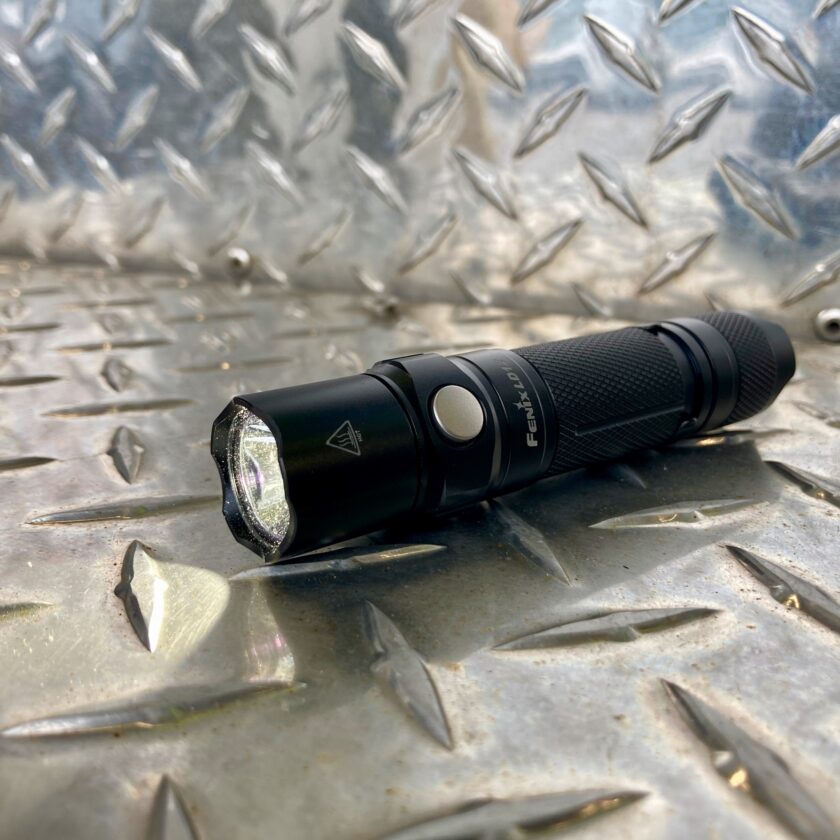
And then there’s the more proactive aspect of a flashlight. A light directly in your eyes (especially when you’re in the dark) is disorienting. It can break off a fight by letting the other party know that you know they are there. It does have the physical effect of reducing the other party’s night vision, making it difficult for them to visually track you. You can keep the beam of a light between someone and yourself which (anecdotally) does seem to discourage them from coming any further. Keep in mind that once the shock of initially dilating their pupils wears off this becomes a psychological barrier, but it can buy you some time.
Though probably most of us (myself included) skew toward lighter and smaller lights, there is something to be said for the larger models. They work fairly well as impact weapons, especially since they are a non-threatening object that can already be in your hand.
Again, if you work in EMS and you’re not carrying a flashlight I recommend you remedy that immediately.
Pepper Spray
Pepper spray enjoys a weird place in EMS, as well. Believe it or not, I honestly think pepper spray is the most controversial item on this list. This is the only one that can’t be justified as a “tool,” or as serving some purpose other than self-defense; when one commits to carrying it he or she is committing to carrying a “weapon.” Oddly, though, the reason pepper spray is so universally recommended (and heavily promoted on this site) is the low consequences of use. Pepper spray is safe for user, target, and bystander. It’s not comfortable, but it’s also considered “less-lethal” force and indicated across a much broader spectrum of situations.
Bear in mind that otherwise perfectly legal use may be a problem for you as an EMT or paramedic on the job. I’m not going to get into “rules of engagement” here because the rules under which you work are different than the rules under which I work. Again, check your agency’s policies, relevant state, local, and municipal law, and your company’s corporate policies. Understand the ramifications of using these tools, and that there may be ramifications even if you do everything perfectly.
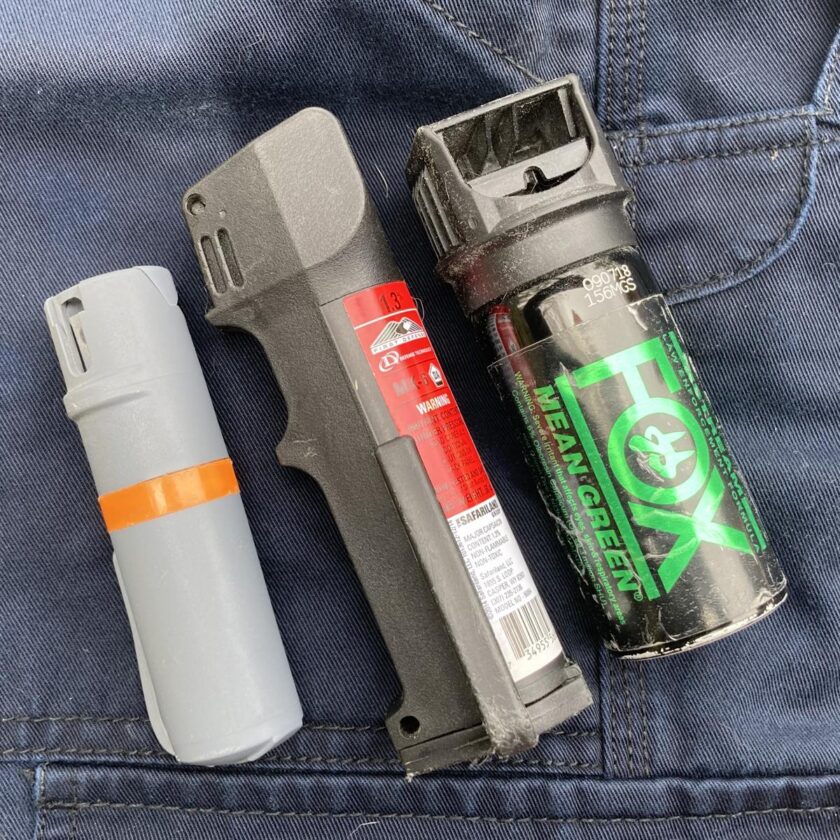
If you are permitted to carry pepper spray I can offer a couple of recommendations. I have written previously about my personal considerations for pepper spray – I recommend you go back and read that article. These get even a bit more focused when I consider what to carry on the job. First, I absolutely want a stream rather than a cone or fog. This is for two reasons. First, the most likely threat against which I will use pepper spray is dogs. I want to be able to spray the dog from as great a distance as possible. Secondly, if I do have to use it indoors I want to minimize (I have no illusions about completely eliminating) blowback on me, my partner, my patient, and any other bystanders. A stream gives me a tad more precision than a cone or fog.
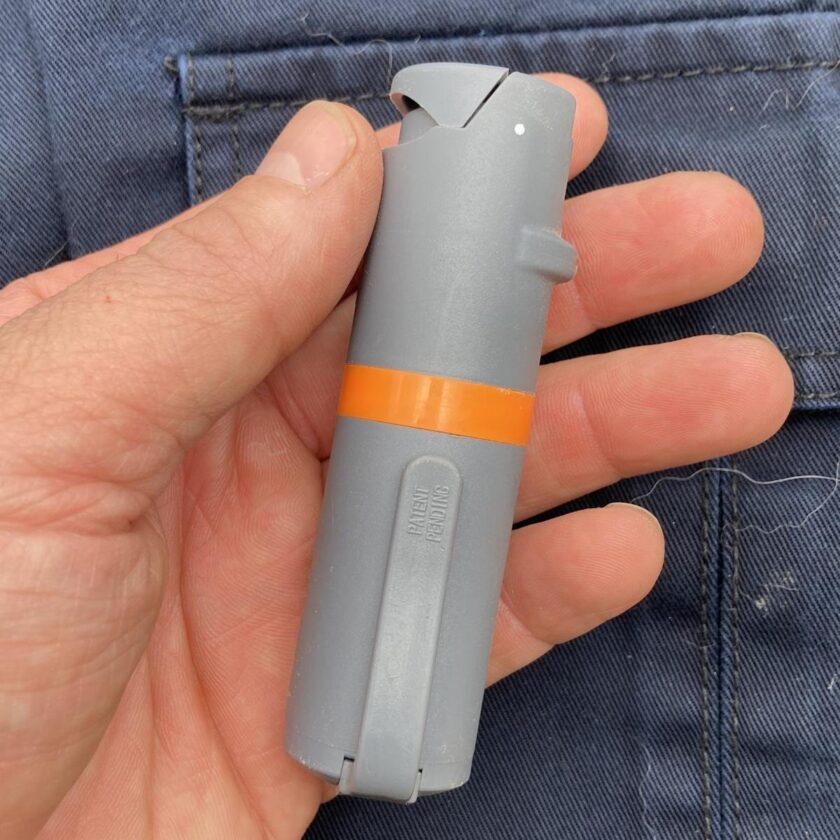
Secondly, form-factor makes a huge difference. If you are pocket-carrying you’ll probably want something small enough to fit into a pocket, and with an appropriate safety. Neil covered various safeties in his recent AAR of Chuck Haggard’s pepper spray class. The smallest pepper spray I can recommend are the very compact units from POM. They come in a ton of colors and utilize a stream pattern. The clip is also optimized for top-down carry, which is ideal for a timely draw/presentation.
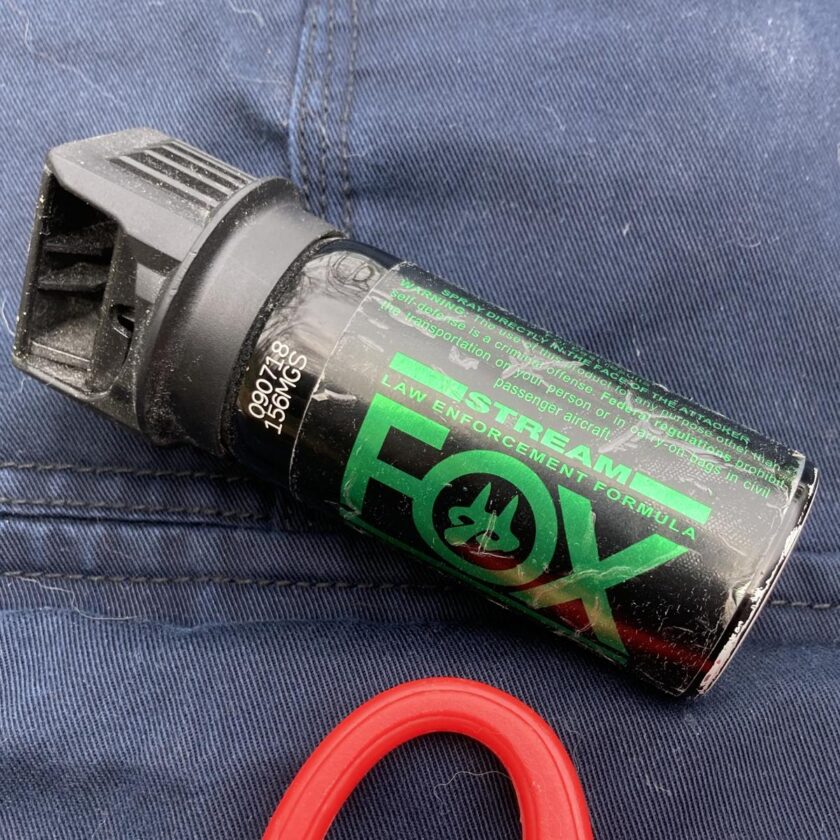
I am a huge fan of Fox Mean Green pepper spray. It has a considerable MCC (Minimum Capsaicin Content) of 1.2%. The MK-3 style can contains 1.5 ounces and fits easily into a cargo pocket (my issued Propper pants have slots inside the pocket, one of which fits this can perfectly). The green dye contained in this formula won’t be mistaken for blood, and it comes in a strong stream. It’s hard to go wrong with this one in my opinion.
One other thing you should probably be thinking about, should you choose to carry pepper spray: pepper spray is absolutely contraindicated for use inside a moving ambulance. Your ambulance is a missile weighing tens of thousands of pounds. Your driver is as likely as anyone in the vehicle to be affected by pepper spray, placing everyone inside the ambulance, as well as citizens outside it, in danger. Your job is to ensure public safety, and enduring some personal danger to ensure public safety is one of the few true sacrifices we make.
Knives and “Rescue Tools”
Knives represent something of a anomaly to me in the context of self-defense, as well. While they are widely and readily accepted for carry, there is some emotional resistance to using them. Those who have used knives in self-defense are often judged somewhat more harshly than those who use a firearm under nearly identical circumstances. However, nearly everyone I know who is working carries a knife and no one – neither peers nor supervisors nor citizens in the community – thinks twice about it. Though knives are generally considered benign any use of one in self-defense is automatically considered deadly force, so I reserved them for last.
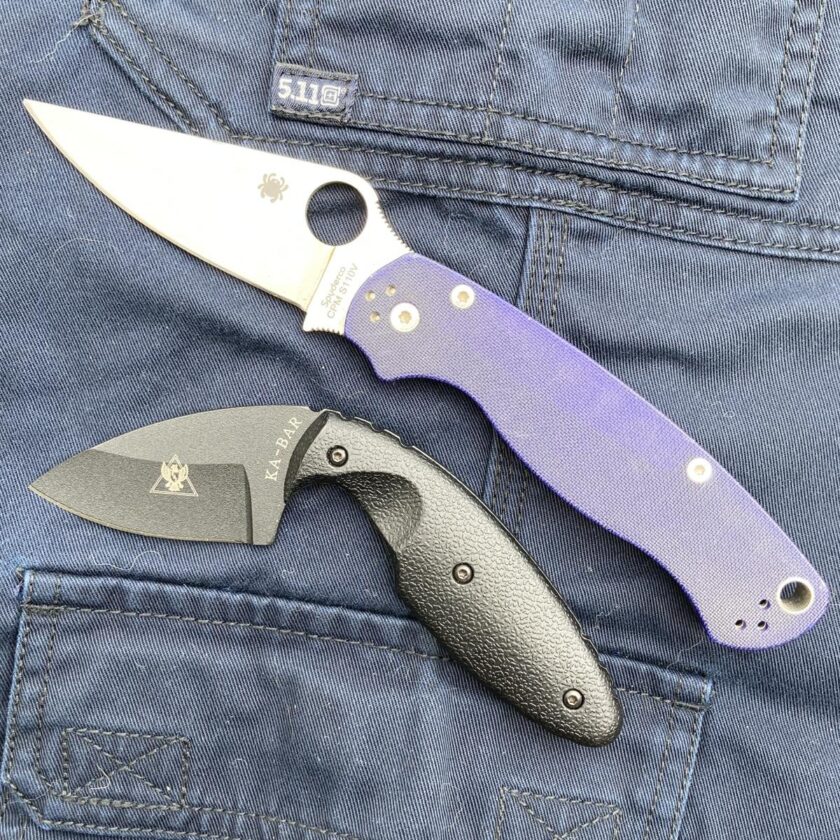
The point is, you’ll probably have no issue at all carrying a knife at your EMS job. I’m sure there are agencies out there somewhere that prohibit the carry of knives, but I doubt any of them would balk at the carry of a “rescue tool.” This may necessitate purchasing a knife that is primarily designed for rescue-type purposes, but can still serve as a defensive implement (the Spyderco Byrd and Benchmade Triage come to mind). However, you may have to work very hard to prove the justification for using a knife on someone. Lethal force applied by someone charged with healing the sick and injured is likely to be scrutinized thoroughly and judged harshly. However, if your life is in immediate, mortal danger, I encourage you to banish all hesitation, commit, and save your own life. That is the tightrope we all walk when we carry firearms, and we should view all applications of deadly force with such seriousness.
I am not an expert in knife-fighting. I have attended some really good training, including under Michael Janich, which I mention only so you know my opinions probably aren’t completely worthless, but they also aren’t Holy Writ. With that said…
I carry two knives on the job. The first is a folder, a Spyderco Para Military 2. I carry this primarily because it is a good, multi-purpose tool. I like its color (blue) because it’s easy to find, and it’s nice and non-tactical looking. The PM2’s size and weight are suitable for me to carry on a daily basis, in or out of uniform. It’s just generally a great, higher-end, USA-made Spyderco. Honestly, though, I don’t want to rely on a folder for defensive use if an alternative exists. First, deployment is demonstrably slower than a fixed blade. Second, deployment is not guaranteed – it’s pretty easy to foul a fast, one-handed deployment of a folder. Third, I carry my folder in my strong-side pocket where it’ isn’t necessarily reachable with both hands.
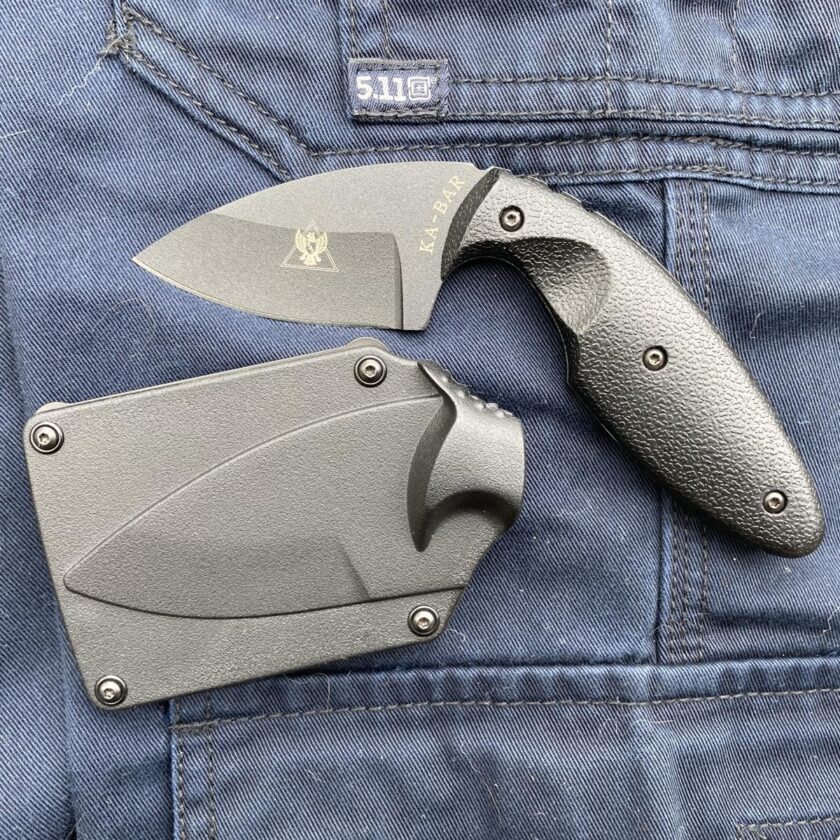
The second, as you have probably guessed at this point, is the Ka-Bar TDI fixed blade. The TDI is a very small fixed blade that was originally designed to be worn by police officers as a firearm-retention tool. Worn behind magazine pouches it is concealed, yet accessible with either hand as a “last option” tool.
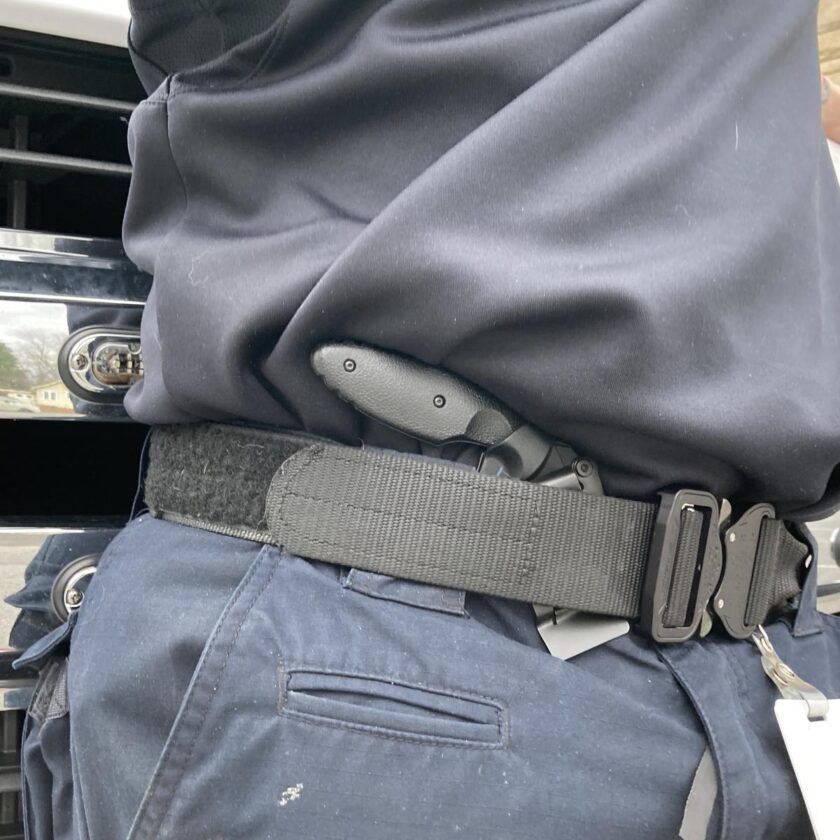
I’ve played with the placement of this knife and I’m still not 100% happy. There are several factors that are playing into my decision of where to carry. The first is visibility: I don’t want the knife to be overtly visible. I don’t want it to be intimidating to patients – I want to appear to the kind, thoughtful clinician that I am. I also don’t want it to be visible to someone who would use it against me since I go “hands on” with pretty much every single patient. Obviously in the winter months when wearing a job-shirt this is no issue, but as summer approaches I am thinking about this a lot more. Attached to the waistband of my pants and tucked down it’s generally pretty hidden by the folds of my shirt, as shown above (the photo makes it way more visible than it is in person). I’m still not perfectly happy with that, but that’s mostly what I’ve been rocking. So far no one has asked me about it (while, over the same period of time at least two co-workers have asked me about my belt).
My second factor is accessibility: I’d like to be able to draw the knife with either hand. In a true, life-or-death struggle I may not have the luxury of having my preferred hand free. While a pocket offers perfect concealment, it does mean I can only get to the knife with one hand. The third factor in my decision of carry positions is comfort: it has to be comfortable. That’s where belt-carry is somewhat tiresome. Though I’ve been dealing with it, the sheath does dig into my inguinal area.
If I had it to do over again I would have purchased the Ka-Bar TDI Investigator. The handle is smaller (and thus less visible) and the sheath appears to be a bit more comfortable. I may buy one at some point and post a comparison of the two knives here. Alternatively the Ka-Bar LDK is a smaller, though perhaps somewhat less capable option that at least one paramedic at my agency carries on her person. If metal detectors are a factor in your day-to-day you might also consider the non-metallic Ka-Bar Shark Bite.
It should probably go without saying, but I’ll say it anyway: a knife would be massively more effective and safe to the user when paired with some training. I highly encourage you to seek training in the use of your defensive tools, and this is no less true with knives.
Raven Concealment Pocket Carry
One other tool that I’ve used with some success is the Raven Concealment Systems “Moduloader” pocket insert. This semi-rigid piece of plastic offers a platform for the mounting of various items within one’s pocket. I’ve found that I can pretty easily mount a knife, a light, and small can of pepper spray from the Moduloader. Not only does it keep items concealed by obscuring their individual outlines, it also keeps them in a consistent draw location.
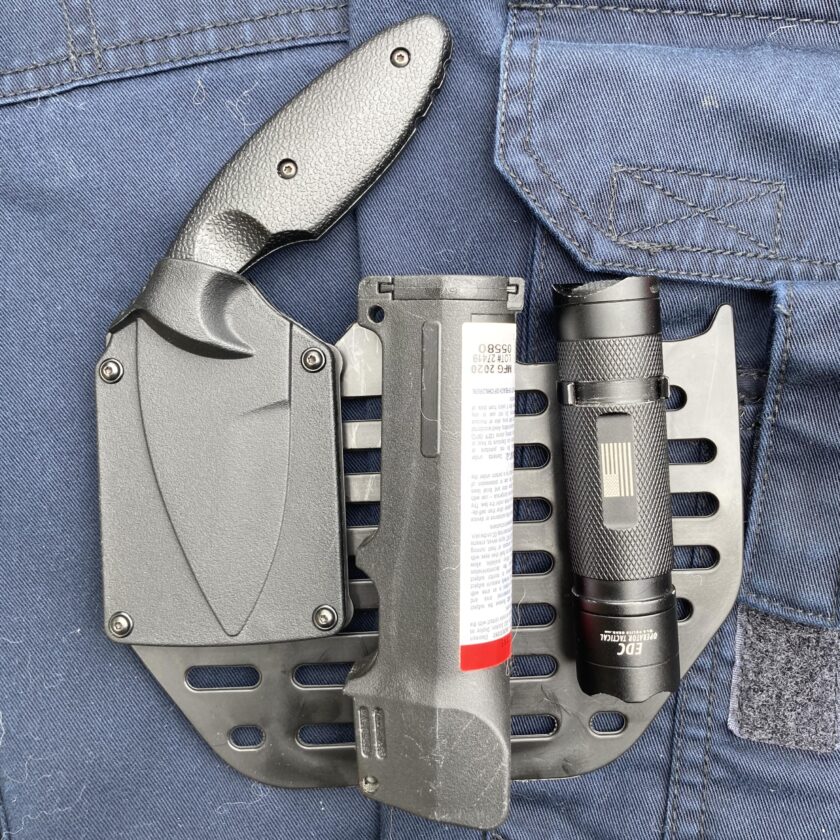
I’ve yet to transition to the Moduloader and I probably won’t. I’m not unhappy with it, I just have too much shit in my pockets already. It may work for some of you, though, and if you’re at a loss for how to carry some of this stuff it might be worth looking into.
Conclusion
This list of tools is hardly exhaustive. This is mostly a list of things I’ve tried and/or am most familiar with. The list of thoughts on the matter of self-defense for EMS professionals is incomplete, as well. Rather than hoping you “do what I do,” rather I hope this gets you thinking. I hope this sparks some thought about your agency’s communications protocols, training on those protocols (and the features of the radios themselves), and about your own carry setup, working within the confines of what is legal for your, what is permitted by your agency, and what you are personally comfortable with.
Self-defense shouldn’t be an EMS professional’s overriding consideration. Being a good clinician, a model citizen, and a servant to the taxpayer should all probably be at the forefront of a EMS professional’s mind. However, he or she should be able to switch gears at a moment’s notice if necessary. No one – not your medical director, your supervisor, or even your partner – cares about your safety like you do. It’s your responsibility. Own it.
†I know you’re probably thinking, “I’d never kill myself!” Guess what? Very, very few people say, “one day, I might kill myself!” Everyone is probably at some risk, whether you realize it or not.






1 thought on “Self Defense for EMS Professionals”
Comments are closed.